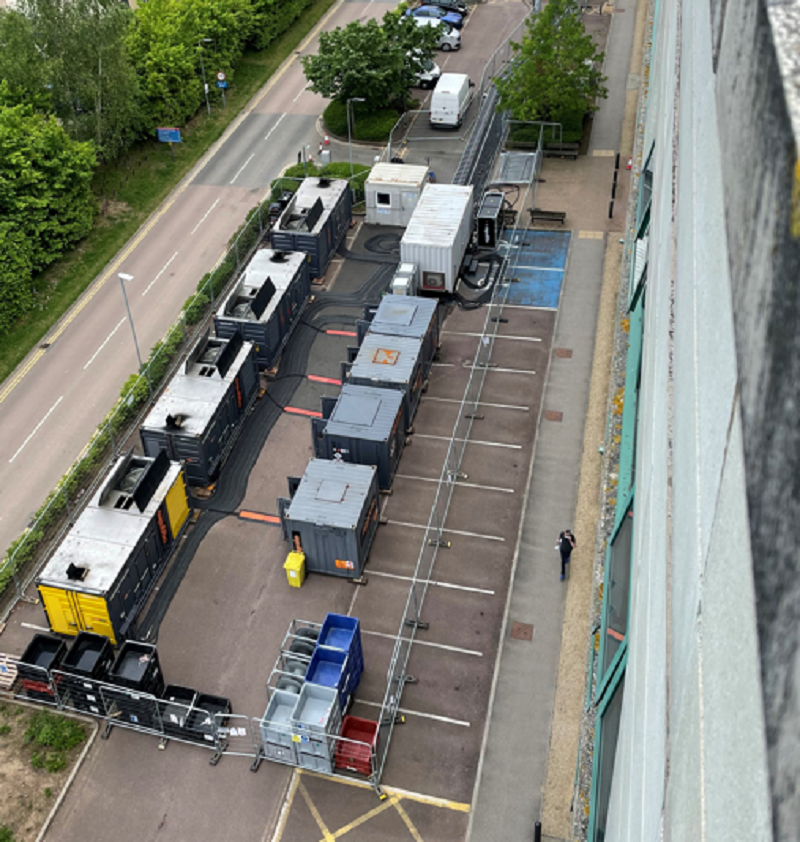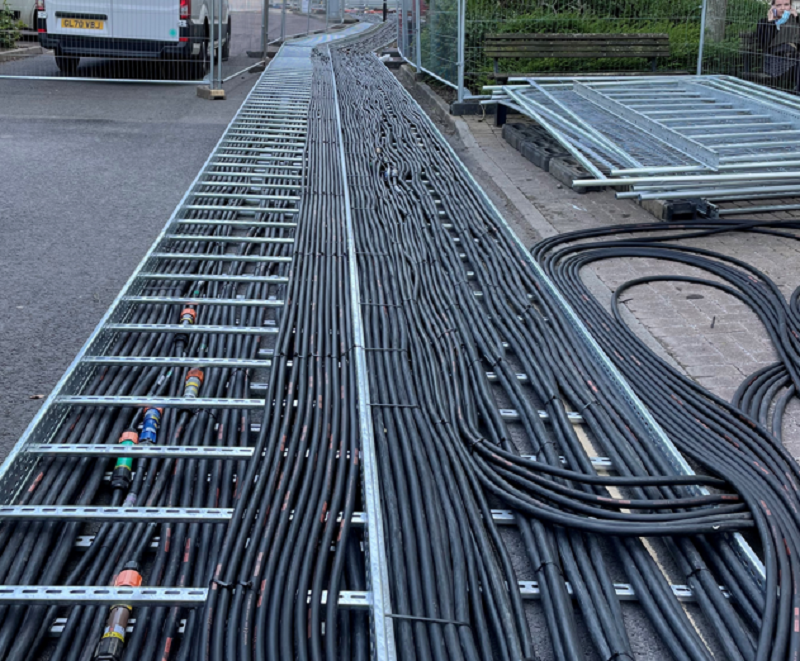With over 66,000sq m of floor space over six storeys, the Great Western Hospital is one of the largest health estates in the South West region, offering a range of services from accident and emergency care to education on health and social care.
After recently celebrating 20 years in operation, the Great Western Hospitals NHS Foundation Trust and facilities management partner, Serco, decided that the building’s infrastructure needed upgrading to meet the demands of a modern medical facility.
Namely, the building’s ageing high-voltage infrastructure was set to receive a number of operational upgrades.
However, this would require the hospital to be disconnected from the National Grid for multiple weeks while the work took place.
Mark Chapple, the trust’s head of estates and facilities, explains: “The time had come to upgrade the site’s standby generator and control system. However, this wouldn’t be possible without disconnecting from the National Grid for an extended period of time, which clearly poses its own risks for a healthcare facility.
“The Great Western Hospital serves more than 300,000 people over its catchment area, so inducing a voluntary closure and relocating patients elsewhere in the meantime simply wasn’t a realistic option.
“For this reason, it was clear that we had to look to alternative means of powering the site while the upgrade took place.”
With this in mind, Aggreko was asked to help identify an effective interim solution.
The company had previously worked with the hospital to help alleviate a planned MTHW system upgrade in 2020, so was already familiar with the unique demands of working on a healthcare estate.
That said, providing the full power requirements for a site of this size would prove no mean feat.
Moreover, the emissions reduction targets outlined in the Greener NHS report meant that opting for an environmentally-friendly solution would be key.
Will Moran, head of estates for healthcare at Serco, said: “We identified the hospital car park as an appropriate location to house the incoming generators. However, in such close proximity to the building itself, it was critical that the equipment did not produce any harmful exhaust fumes that could find their way inside through external air intakes.
“For this reason, we asked the Aggreko team to identify green energy solutions for the site.
“This would also allow us to maintain consistent, uninterrupted power while demonstrating compliance with the emissions reduction targets outlined in the Greener NHS scheme.”

The system was powered on palm oil-free hydrotreated vegetable oil (HVO), an environmentally-friendly alternative to diesel
Ensuring resilience
Aggreko suggested powering the site solely on palm oil-free hydrotreated vegetable oil (HVO), an environmentally-friendly alternative to diesel for use in gensets.
The trust and Serco were both quickly on board with this proposal, and the project was scheduled to begin in late March.
The choice to specify HVO over diesel would result in a saving of 764 tonnes of emissions over the course of the partnership.
Aggreko provided three separate generator packages in order to comprehensively meet the power demands of the site, with all systems running on HVO. The main hospital building had four 1250kVA generators, set up in load-sharing mode to offer an uninterruptable power supply. Meanwhile, the energy centre and feeder pillars had three 320kVA generators and two 60kVA generators respectively.
With the consequences of a power outage in this setting so severe, Aggreko also incorporated N+1 resilience for both the main hospital and energy centre. This meant the site’s full power requirements could still be met even in the event of an untimely generator failure.
Shortly into the build, Aggreko made changes to the generator configuration for the benefit of both maintenance and health and safety. It was decided that the cabling would be moved from the ground to a ladder rack, reducing tripping risks. Such an arrangement facilitated easier fault-finding for the onsite team, while also allowing components to be more easily replaced should it be necessary.
This undertaking saw Aggreko supply six miles of cabling.

Six miles of cabling was used across the hospital
Going the extra mile
The gensets remained in place for a total of seven weeks, with the systems active for around four of those.
Post-installation, an Aggreko engineer remained stationed on site for the duration of the project, providing a continuous, 24/7 management service.
Crucially, this allowed potential issues to be resolved as, and when, they arose, before posing a more-serious threat to the set-up.
Aggreko’s duties were further extended to performing bi-hourly checks on the package in order to evaluate system performance and optimise generator usage.
Timothy Hales, sector sales engineer at Aggreko Northern Europe, said: “Though Aggreko has provided power for medical facilities in the past, the use of HVO in this instance makes this project truly the first of its kind.
“This undertaking serves as a key example as to what can be made possible with greener technology and fuels.”
He added: “Ageing building stock is a challenge facing many of the health estates across the nation, so demonstrating a means of bridging the gap without violating the targets set out by the Greener NHS scheme is a truly-landmark achievement.”




